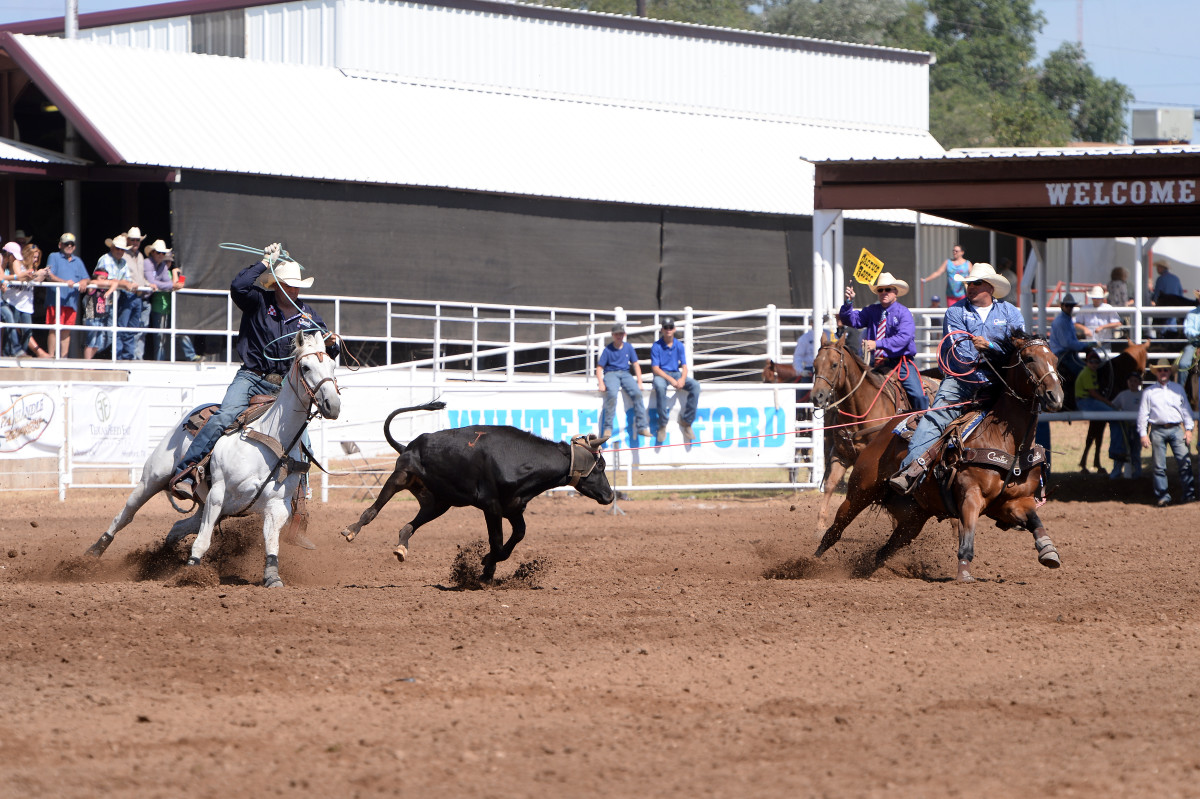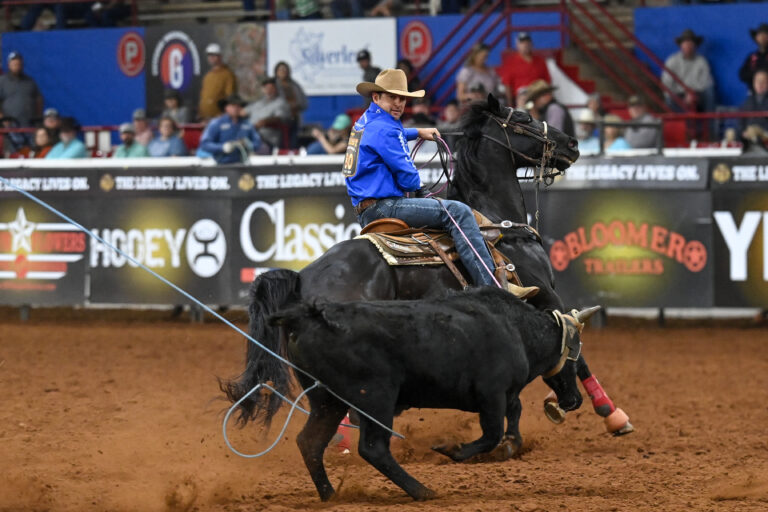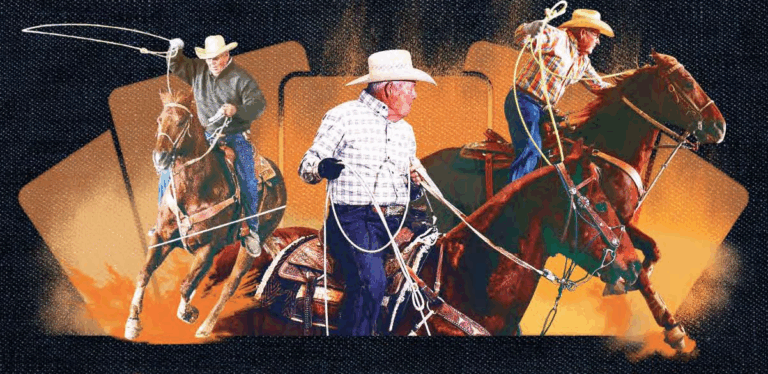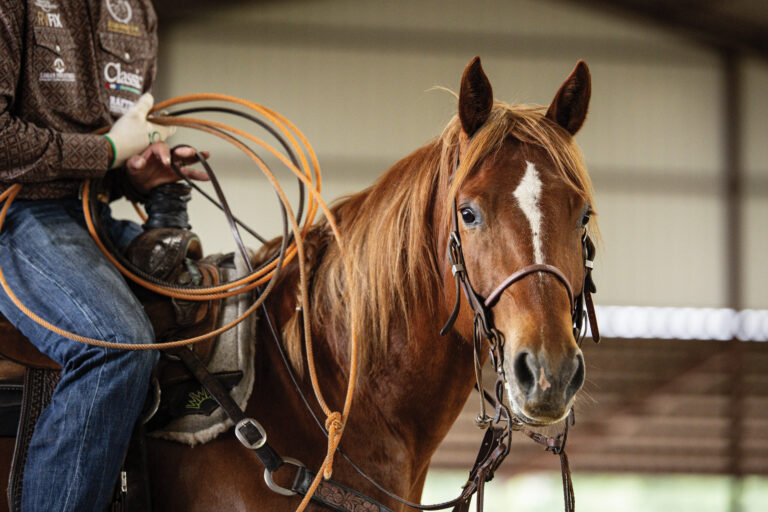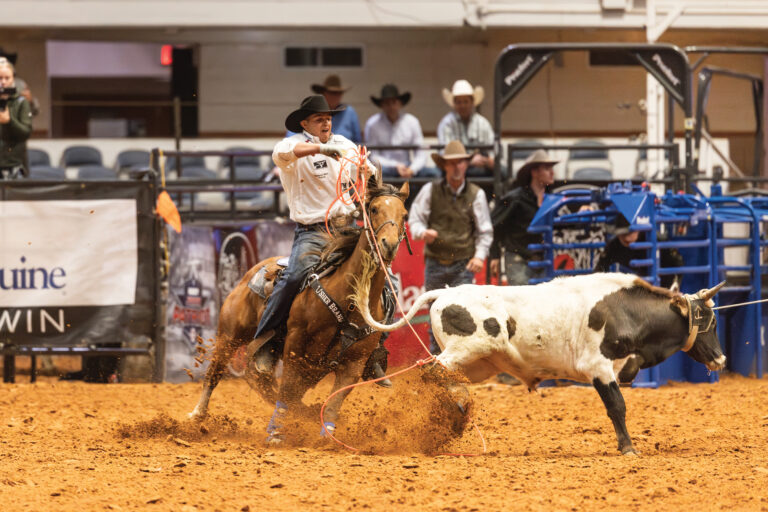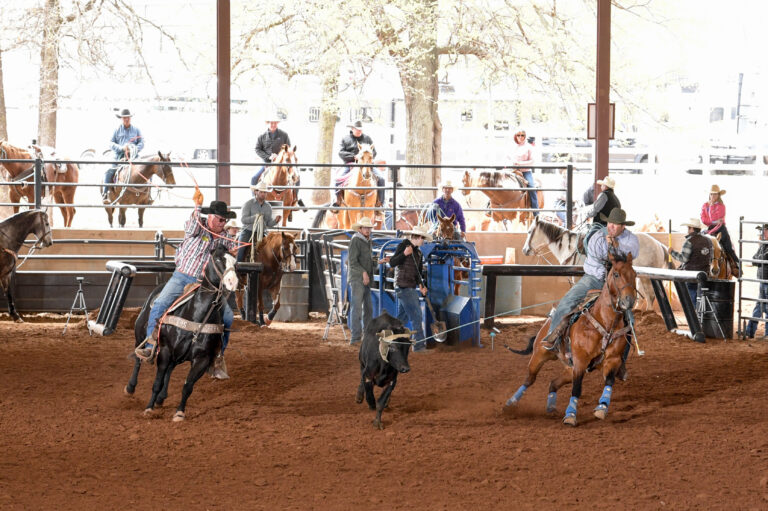Before the roping (Spicer Gripp Memorial in Hereford, Texas) started, I knew I didn’t want to get in a hurry or take a bad shot. I wanted to be good at the barrier and catch both horns and never get in a hurry. I really wanted to handle these cattle because I knew they were fresh and only had a few runs on them.
In this first picture here, you can see I’m holding my horse up. I’ve got it around the horns and I’m pulling my slack there. At the time of year when the Spicer Gripp is (in Hereford, Texas), it’s August and we’ve been going to a lot of rodeos and our horses are wanting to get quick. Getting back on these light steers, a guy just has to be a little more patient.
[READ MORE: Knowing Your Horse In Jackpots or Rodeo Situations with Dustin Bird]
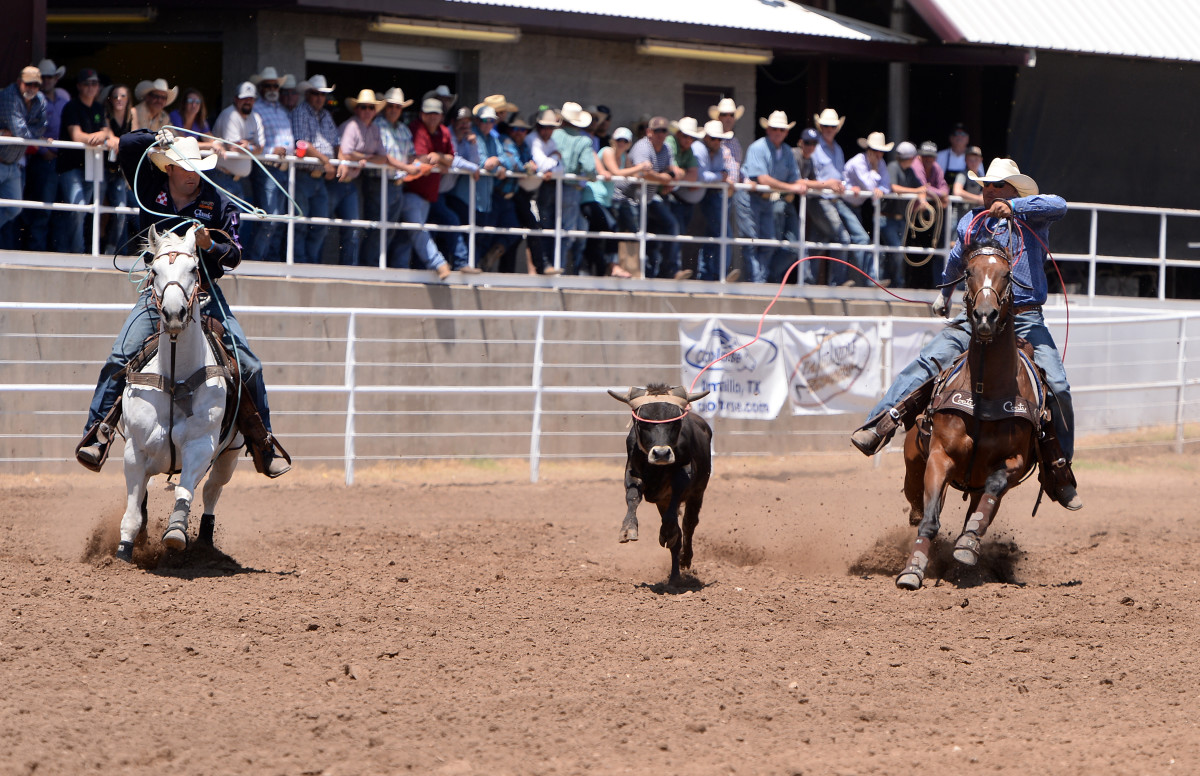
Here, I’m getting to the horn and still holding my horse, Dolly, up. We’ve roped together so long, me and her, she can tell when we’re making a jackpot run and we run in there close. She’s always gone hard at every single steer. That’s why she can rodeo or jackpot. She runs so hard every single time that it’s easy to rope fast and she’s quick-footed enough to make a fast move at the rodeos. Then when you go to a jackpot she leaves so hard you can go all they way in there to the hip and get ahold of one. She’s always wanting to get underneath herself and move out wide. I almost do everything the same on either kind of run, but I just may do it sooner on a rodeo run.
[READ MORE: Bird Tops $1-Million in Career Earnings]
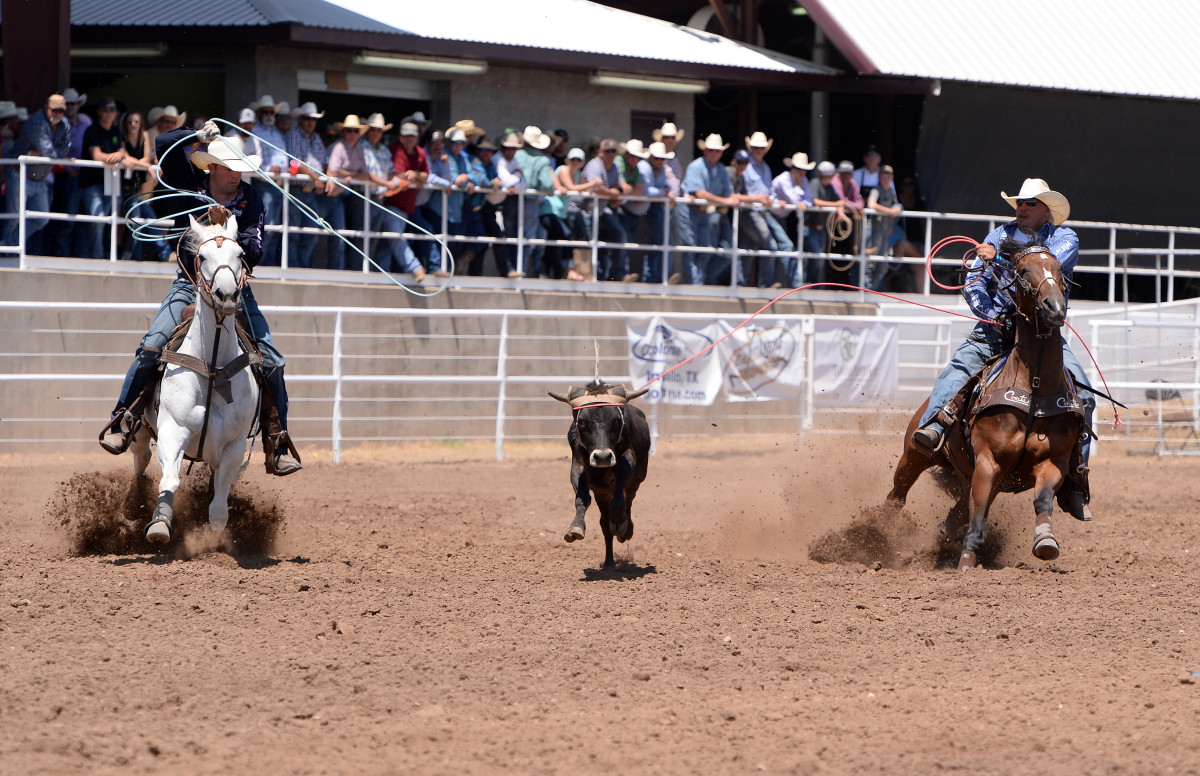
[READ MORE: Making It Count: Bird and Eaves Win the Gripp]
This third shot shows me holding her up really well. I’ve got ahold of the steer’s head right here and I’m still holding my horse in through the whole deal. If you didn’t handle these steers—if you rushed through everything—they would get a little weaker and some of them even fell down and took guys out of the average that way. It’s tempting to try to pick up a little time and not handle your cattle, not hold your horse in there, and the steer can wash out or go down and you have to wait for him to get up.
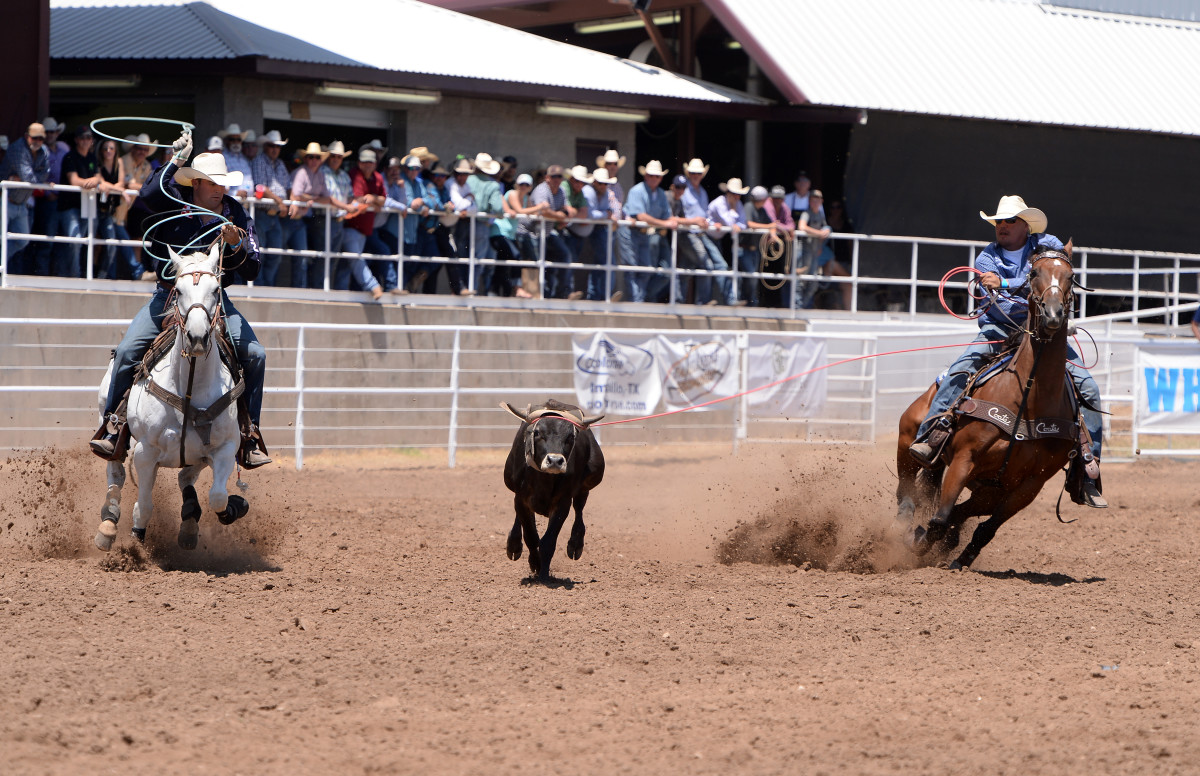
I’ve turned the steer’s head, but I’m holding him a little bit more, pushing forward and starting to pull him across the arena. In all these pictures, Paul Eaves is keeping his spacing because he knows I’m not going to duck out of there and leave him. He’s keeping his horse going straight down the arena to get out around the steer. He’s maintaining his position until they come around where he can rope them. When that steer turns, he’s going to be right where he wants to be. If he can rope them on the first jump at a jackpot, we’ll be doing good.
[READ MORE: Dustin Bird and Trey Yates End Team Roping Partnership with Win at The 2019 Cheyenne Frontier Days]
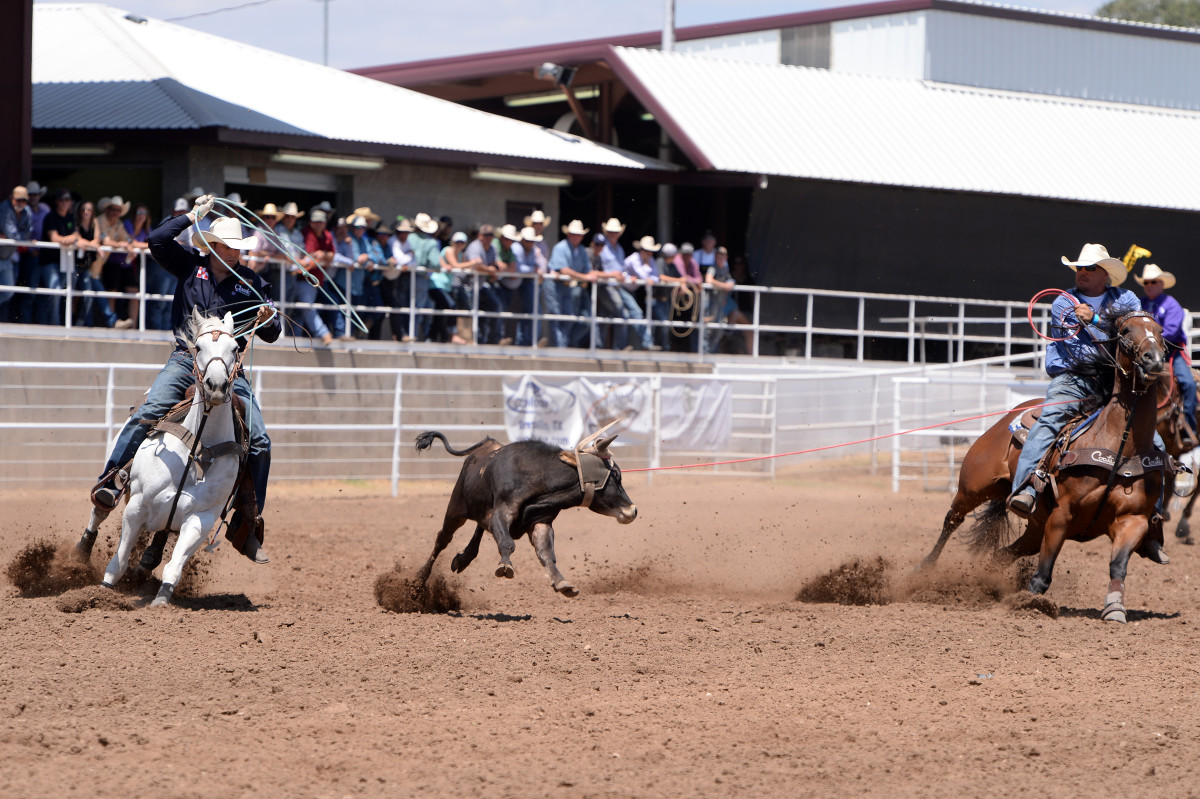
It seems like holding your horse up takes forever—and costs you time—but it really doesn’t. Getting square, getting ahold of his head and the widening out and pulling him, is just a common jackpot move.
[READ MORE: Mare Power: Greatest Mares in the Team Roping Industry]
